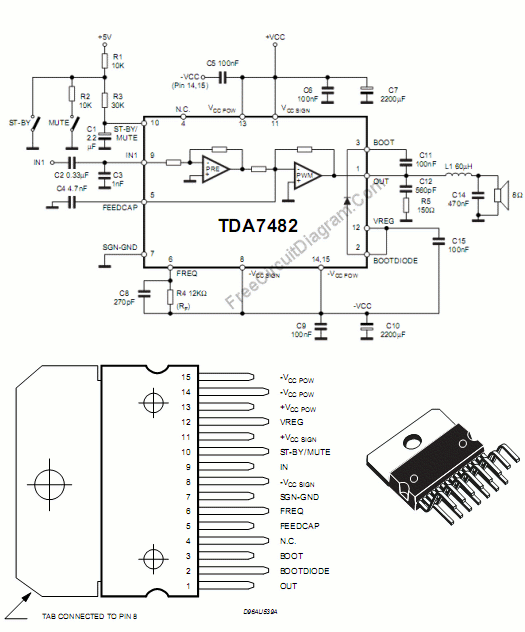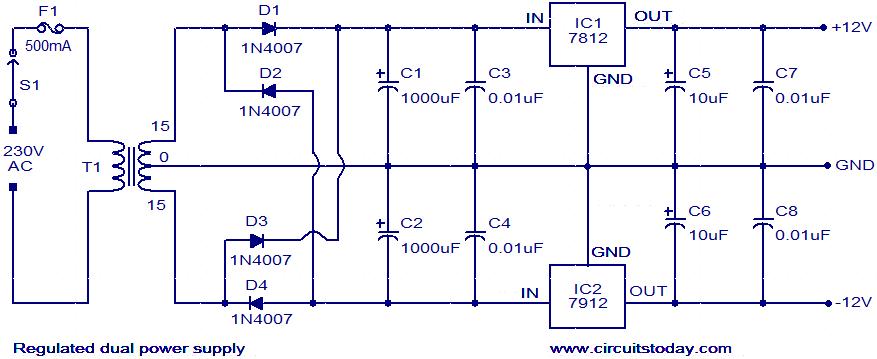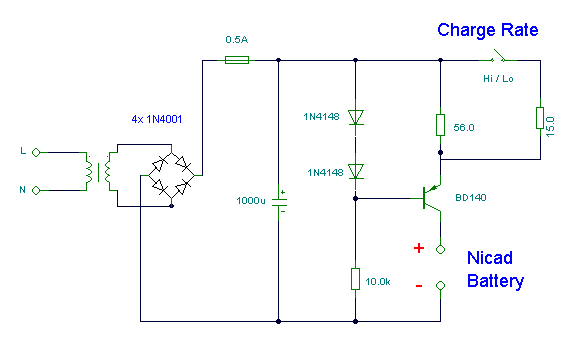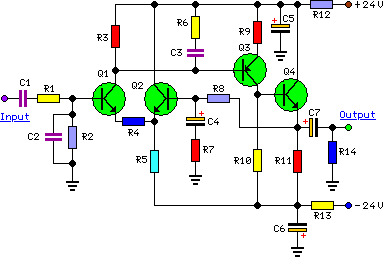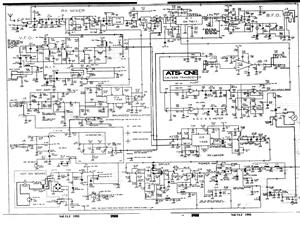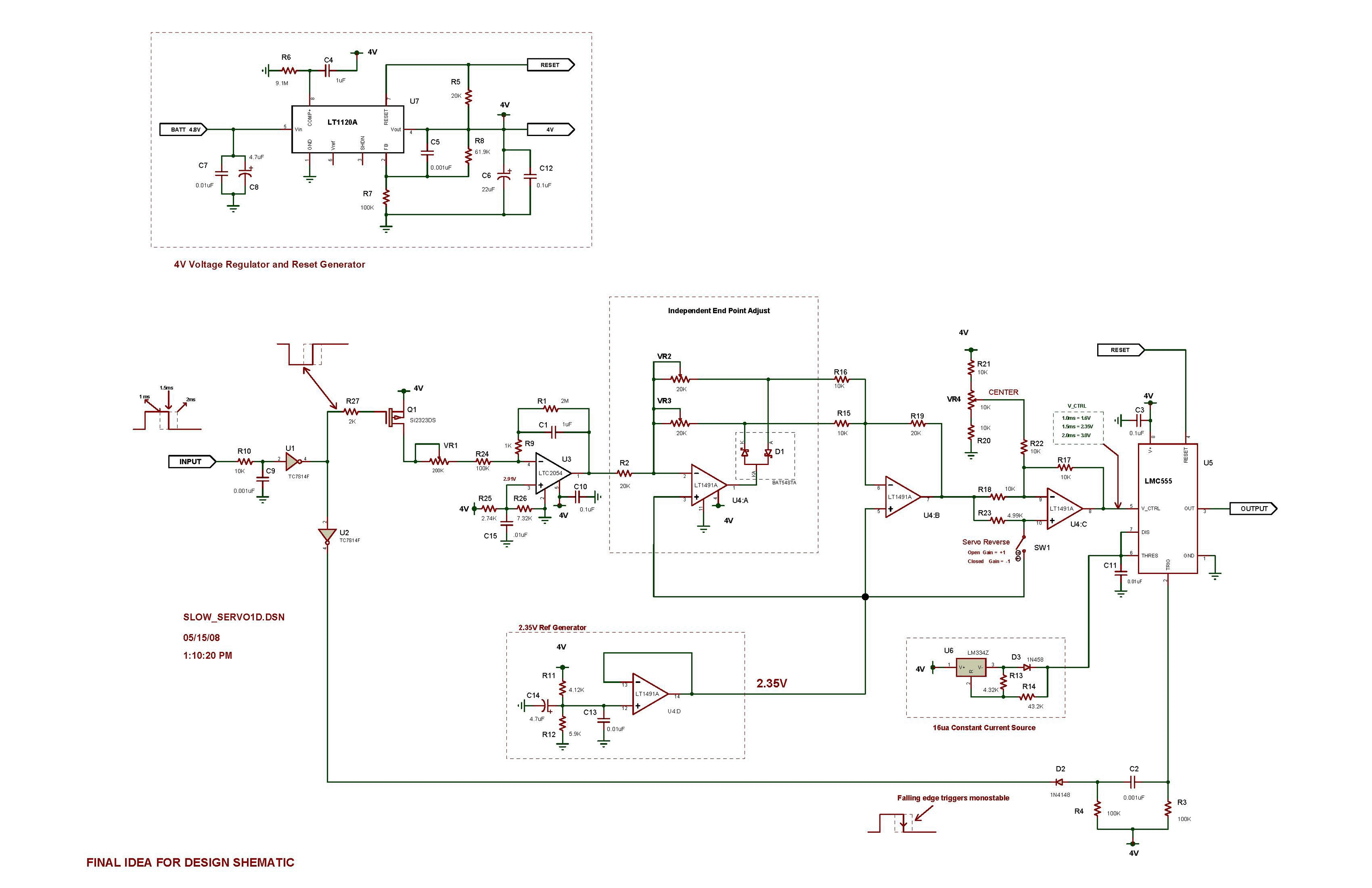
Stereo Preamp With Tone Control Circuit
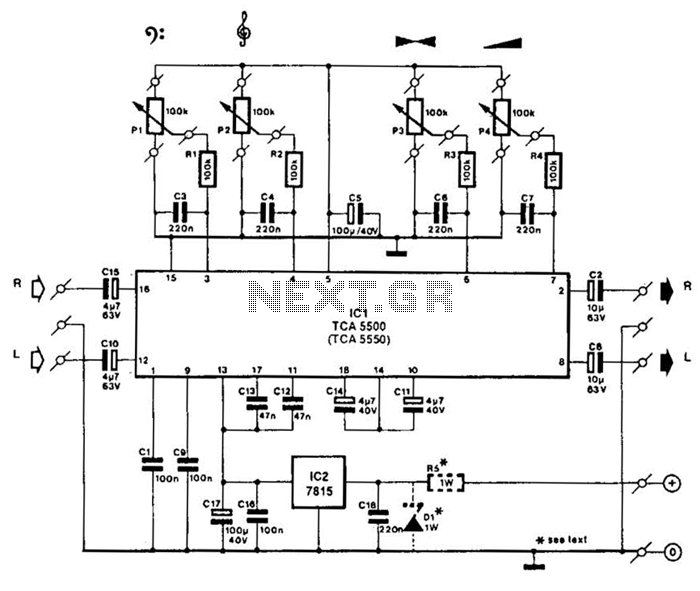
A Motorola TCA5500 or TCA5550 can be utilized to create a stereo preamplifier system equipped with tone controls. This circuit is designed to offer a gain of approximately 10 times, a tone-control range of 14 dB, and a volume control range of 75 dB. It operates effectively within a voltage range of 8 to 18 V DC. The second integrated circuit (IC2) supplies 15 V to the first integrated circuit (IC1), with the input for IC2 being sourced from the positive rail of the power amplifier's power supply. Additionally, a diode (D1) and resistor (R5) should be incorporated if the input voltage exceeds 30 V.
The Motorola TCA5500 or TCA5550 integrated circuits are designed to function as stereo preamplifiers, providing essential features for audio signal processing. The gain of approximately 10X allows for effective amplification of weak audio signals, making them suitable for driving subsequent audio processing stages. The tone control feature, with a 14 dB range, enables users to adjust the bass and treble levels, enhancing the listening experience based on personal preferences or specific audio environments.
The volume control range of 75 dB ensures that a wide variety of listening levels can be achieved, from very quiet to very loud outputs, accommodating different listening situations. The operational voltage range of 8 to 18 V DC allows for compatibility with various power supply configurations, making the circuit versatile for different applications.
In this configuration, IC2 plays a critical role in providing a stable 15 V supply to IC1, ensuring reliable operation of the preamplifier. The input for IC2 being taken from the power amplifier's positive rail is a practical design choice, as it simplifies the power supply arrangement and minimizes the need for additional components.
The inclusion of D1 and R5 is a precautionary measure to protect the circuit in scenarios where the input voltage may exceed 30 V. This is crucial to prevent damage to the integrated circuits, which are rated for lower maximum input voltages. By ensuring that the circuit can handle higher input voltages, the design remains robust and reliable under varying operational conditions.
Overall, this preamplifier circuit design using the Motorola TCA5500 or TCA5550 is an effective solution for enhancing audio signals, providing users with control over tone and volume while maintaining compatibility with standard audio systems. A Motorola TCA5500 or TCA5550 can provide a stereo preamplifier system with tone controls. This circuit provides a gain of about 10X, a 14-dB tone-control range, a 75-dB volume control range, and it can operate from 8 to 18 Vdc. IC2 provides 15 V for ICl, and the input of IC2 can be supplied from the power amplifier`s power supply (+) rail.
Dl and R5 should be used if over 30 V input will be used. 🔗 External reference
The Motorola TCA5500 or TCA5550 integrated circuits are designed to function as stereo preamplifiers, providing essential features for audio signal processing. The gain of approximately 10X allows for effective amplification of weak audio signals, making them suitable for driving subsequent audio processing stages. The tone control feature, with a 14 dB range, enables users to adjust the bass and treble levels, enhancing the listening experience based on personal preferences or specific audio environments.
The volume control range of 75 dB ensures that a wide variety of listening levels can be achieved, from very quiet to very loud outputs, accommodating different listening situations. The operational voltage range of 8 to 18 V DC allows for compatibility with various power supply configurations, making the circuit versatile for different applications.
In this configuration, IC2 plays a critical role in providing a stable 15 V supply to IC1, ensuring reliable operation of the preamplifier. The input for IC2 being taken from the power amplifier's positive rail is a practical design choice, as it simplifies the power supply arrangement and minimizes the need for additional components.
The inclusion of D1 and R5 is a precautionary measure to protect the circuit in scenarios where the input voltage may exceed 30 V. This is crucial to prevent damage to the integrated circuits, which are rated for lower maximum input voltages. By ensuring that the circuit can handle higher input voltages, the design remains robust and reliable under varying operational conditions.
Overall, this preamplifier circuit design using the Motorola TCA5500 or TCA5550 is an effective solution for enhancing audio signals, providing users with control over tone and volume while maintaining compatibility with standard audio systems. A Motorola TCA5500 or TCA5550 can provide a stereo preamplifier system with tone controls. This circuit provides a gain of about 10X, a 14-dB tone-control range, a 75-dB volume control range, and it can operate from 8 to 18 Vdc. IC2 provides 15 V for ICl, and the input of IC2 can be supplied from the power amplifier`s power supply (+) rail.
Dl and R5 should be used if over 30 V input will be used. 🔗 External reference
